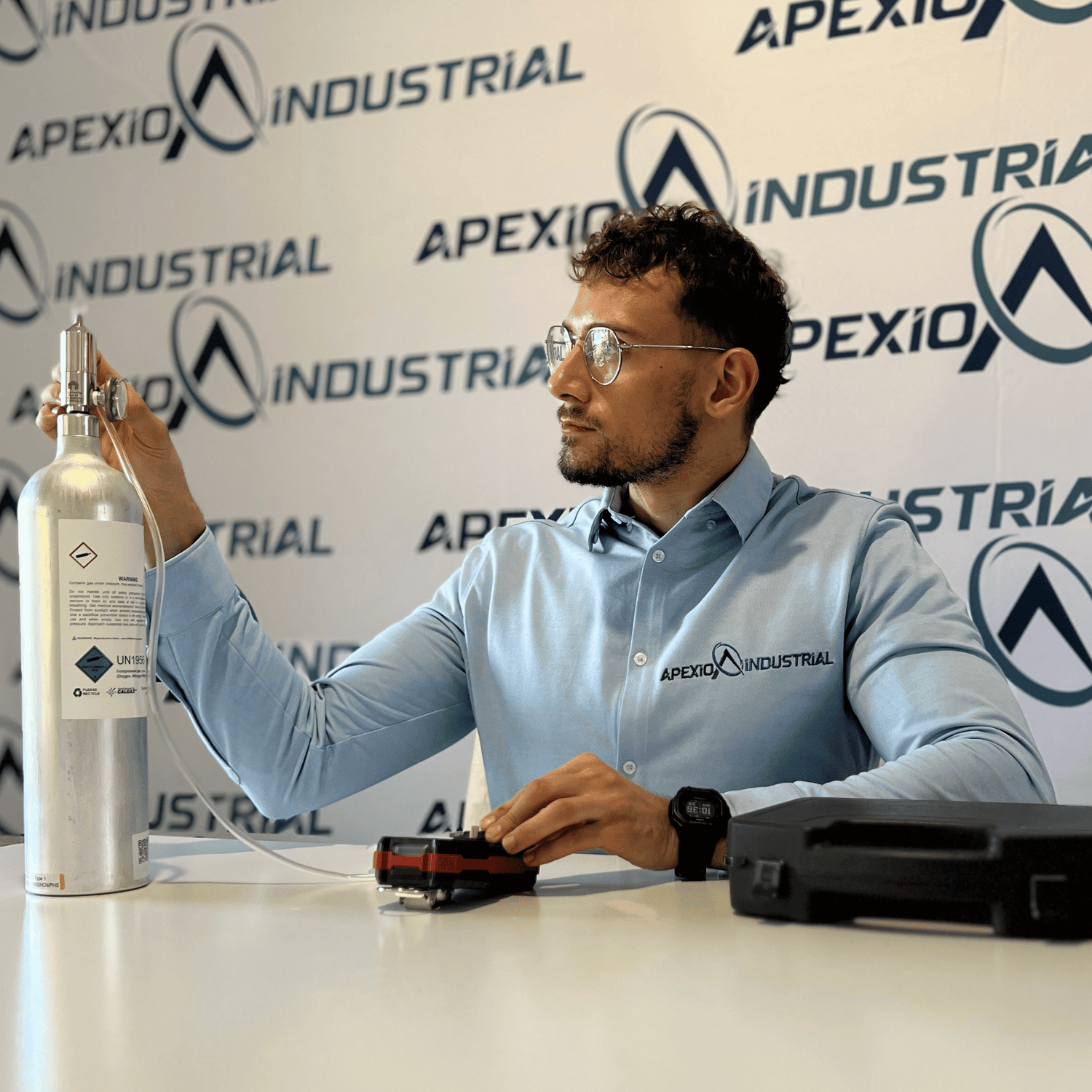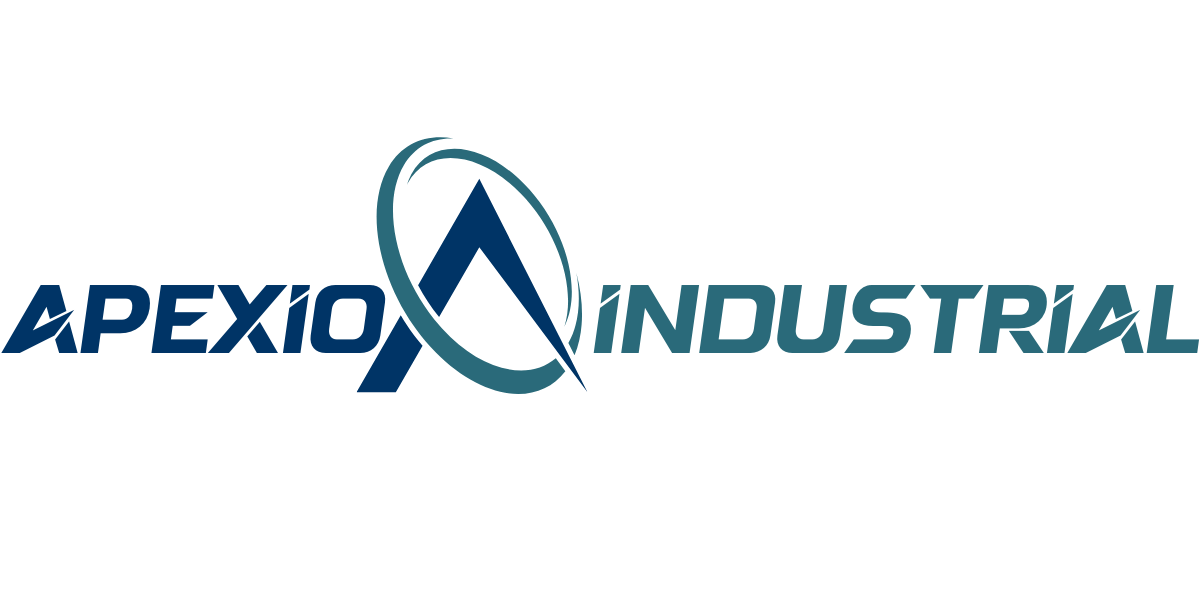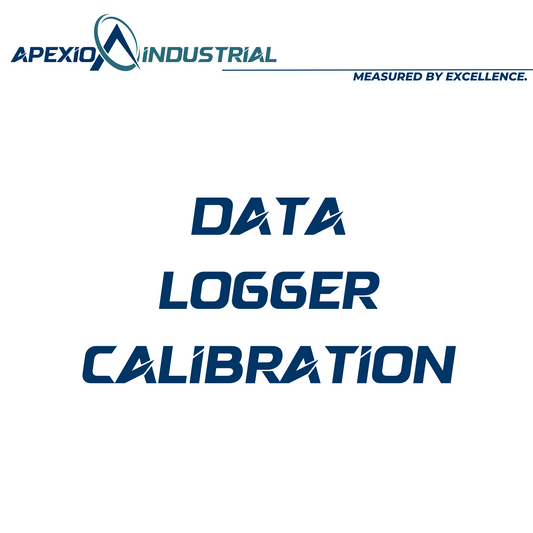Calibration Services

Measured By Excellence
Apexio Industrial are the sole authorised distributors of many well known instrumentation manufacturer brands.
With the help of Apexio Industrial employees experience of over 20 years in the industrial industry, we pride ourselves on providing low cost, dependable instruments for research or compliance purposes.
Apexio Industrial also provides a range of technical support services to help you get the most out of your equipment along with traceable calibration in a control laboratory environment and on-site calibration services.
How The Calibration Process Works
Book Your Calibration Services
-
Gas Detector Calibration
Regular price $85.00 AUDRegular priceUnit price per -
Data Logger Calibration
Regular price $85.00 AUDRegular priceUnit price per
Talk To A Laboratory Technician About Your Calibration Needs.
We provide national traceable standard certificates
Introduction to our services
Calibration & Service — Frequently Asked Questions
Q: I’ve lost my calibration certificate. Can I get a replacement?
Yes. If your instrument was serviced or calibrated by us, we keep a digital copy on file. Provide the serial number of your unit and we’ll issue a replacement certificate. If calibration was done by the manufacturer, we may be able to request a copy on your behalf.
Q: Will my gas detector come with a calibration certificate?
No. All detectors we ship from our calibration services exclude calibration but by add on the gas calibration service charge you will get a valid calibration certificate.
Q: How frequently should a gas detector be calibrated or serviced?
Most manufacturers recommend calibration every 6 months (180 days). Some PID/VOC detectors may allow a 12‑month interval. If you're unsure for your specific model, just contact us for guidance.
Q: Can I calibrate my detector myself?
Yes, it’s possible. You’d need a calibration gas, regulator, tubing, and possibly a docking station. However, to ensure accuracy and safety, we strongly recommend having a qualified technician perform the procedure. Plus the added valuable benefit is that you will have a third party audited calibration with NATA Traceability which some sites require.
Q: Why is calibration important?
Gas detectors operate in harsh environments, which can affect sensor accuracy. Over time, exposure to contaminants, temperature extremes, or humidity may drift the readings. Calibration re‑sets the sensor against a known gas concentration to restore accuracy. In many industries, calibration records are also required for compliance.
Q: What tools and materials are required for calibration?
You’ll typically need:
- Calibration gas (the correct gas or mix for your sensor)
- Regulator and gas flow control
- Calibration cap or adaptor
- Tubing
- If available, a calibration docking station for automation
For help identifying which setup is right for your model, just reach out to us.
Q: What does “Beyond Economical Repair (BER)” mean?
If a detector is damaged beyond repair, obsolete, or the cost of parts exceeds the unit’s value, we may classify it as BER. In that case, we'll let you know and often offset inspection costs if you choose to replace it.
Q: What is a bump test vs. calibration?
A bump test is a quick qualitative check. You expose the detector to a target gas to confirm it alarms correctly.
Calibration is quantitative: you expose the sensor to a known concentration of gas and adjust its readings to match that standard.
Q: How often should I perform a bump test?
We recommend doing a bump test daily, or at minimum before each use. Always follow your detector manufacturer’s guidelines and any applicable regulatory requirements.
Q: Can you service or calibrate detectors I didn’t purchase from you?
Yes. As long as it’s within the range we support, we can service units regardless of where they were bought. Contact us with the make and model to confirm. Then simply follow our RMA (Return Merchandise Authorization) process to send the unit in.
Q: Can I extend my calibration interval to 12 months instead of 6?
We stock many sensors and can order those we don’t immediately have. Because sensors have expiry dates, stock is limited. Contact us to check availability or place a special order.
Q: How do I order spare parts for my detector?
Similar to sensors, we carry many spare parts and can order non-stock parts from manufacturers. Check with us or browse our online catalog to find what you need.


